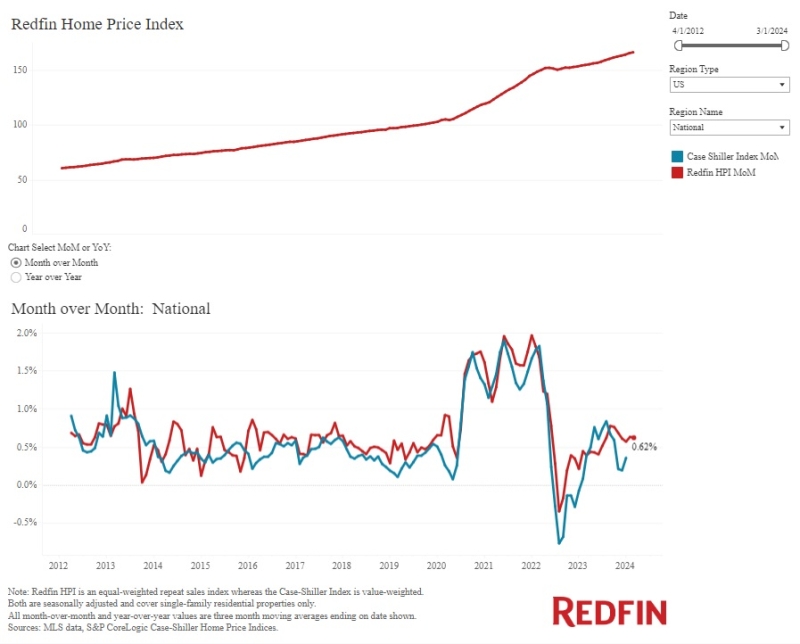Advertisement
The Mini-Correspondent Channel: Pros and Cons

Several years ago, our firm, Lenders Compliance Group, provided unique guidance to the mortgage division of a bank. The bank wished to build a special origination platform for its mortgage brokers. At that time, the prevailing regulations required disclosure of the yield spread premium (YSP), and the bank wanted to give their third-party originators (TPOs) an opportunity to close in their own name, with their own funds, and, among other things, by-pass disclosure of the YSP. In building the platform for the bank, many features were needed to implement these relationships in accordance with federal and state law, as well as safety and soundness metrics. This all took place at a time when a three percent fee cap on broker revenue was not even a glimmer in the eyes of legislators or regulators, and Elizabeth Warren1 had yet to promote the creation of the Consumer Financial Protection Bureau (CFPB).
As Shakespeare wrote in The Tempest, “What’s past is prologue.”
Since the early part of this year, many lenders are building a new origination channel. The proximate cause for the new channel is found in the Final Rule pertaining to the Ability-to-Repay guidelines and the requirements of a Qualified Mortgage (Rule).2
The new channel is meant specifically for brokers who hope to bypass a three percent cap on loan amounts above $100,000, the new CFPB requirement that substantially and principally affects broker TPOs.3 The loans covered by the Rule are first lien and junior lien mortgage loans that are closed-end mortgage loans secured by a dwelling, including home purchase, refinance and home equity loans. (Excluded loans are HELOCs; Timeshares; Reverses; Bridges with a term of 12 months or less and loans to purchase a new dwelling where the consumer plans to sell another dwelling within 12 months; Vacant Lot loans; Loan Modifications not subject to the "refinancing" provisions under TILA; and Business Loans.)4
In particular, many brokers usually seek to charge fees between two and three percent per loan transaction; however, as of Jan. 10, 2014,5 any excess above three percent in total points and fees virtually guarantees that such loans, originated by brokers, will not be eligible for treatment as a Qualified Mortgage (QM). The result of the Final Rule and specifically the three percent cap is to create an incentive for many brokers to morph into a new kind of correspondent, termed the “Mini-Correspondent.” The new origination channel developed by some wholesale lenders is aptly called the “Mini-Correspondent Channel.”
One of us, Jonathan Foxx, has written extensively–both in magazine articles and newsletters–about the Ability-to-Repay guidelines (ATR), the Qualified Mortgage (QM), and the Non-Qualified Mortgage (viz., which he has titled the “NQM”). For additional details and guidance, please read those publications.6
In this article, we are going to explore two interrelated issues. First, we will discuss the three percent cap, its implementation and placement within the QM framework, and the way it affects the originations of the mortgage broker. To do that, we will provide the QM framework into which the three percent cap is situated. Secondly, we will discuss the structure of and certain requirements relating to a mini-correspondent TPO. Bear in mind that this new type of TPO is taking place in a dynamic regulatory environment and loan origination market; therefore, aspects of our observations may change, due to a regulatory response, or other material factors, that pertain to originating loans through this new channel.
Two classes of qualified mortgages
Essentially, the Rule creates two types of QMs, one of which provides a safe harbor from liability and another which does not provide a safe harbor, but does offer a rebuttable presumption of compliance with the Rule. Obviously, the former is preferred, though the latter is not without its merits.
The safe harbor is only available if the creditor complies with all aspects of the Rule, including, at minimum, all the ATR guidelines, and where the Annual Percentage Rate (APR) on a first lien loan must be within 1.5 percentage points of the “average prime offer rate” (APOR) as of the date the interest rate is set (viz., the APR on a junior lien must be within 3.5 percentage points of the APOR).7 If the APR threshold is exceeded, the creditor has a rebuttable presumption of compliance.
The distinction between the safe harbor and rebuttable presumption is very significant. With the safe harbor, a lender obtains a conclusive presumption of compliance and may refute a claim that it violated the Rule, such as not complying with the ATR guidelines. But if the lender obtains only a rebuttable presumption of compliance, a claim can be litigated on the basis of a creditor not making a “reasonable” and “good faith” determination of the borrower’s ability to repay, irrespective of a lender’s complying fully with various aspects of the Rule, such as the ATR guidelines.
The ATR test promulgated by the Rule consists of eight factors. Neither the safe harbor nor the rebuttable presumption is available to a lender solely because a loan is underwritten to the ATR test’s guidelines. The ATR factors require the lender to underwrite and verify (1) current or reasonably expected income or assets, other than the value of the dwelling, (2) current employment status (viz., if the creditor is relying on employment income), (3) monthly payment, (4) monthly payment on any “simultaneous loan” of which the creditor is (or should be) aware, (5) mortgage-related obligations, (6) current debt obligations (including alimony, palimony, and child support), (7) monthly Debt-to-Income (DTI) ratio or residual income, and (8) borrower credit history. It should be noted that the ATR test itself does not place limits on points and fees.
Qualified mortgage and the three percent cap
As mentioned above, a QM with an APR that does not exceed the APOR thresholds receives a safe harbor from liability (i.e., compliance with the ATR guidelines). If the APOR thresholds are exceeded, this means that the loan is a higher-priced QM, and, as such, receives the rebuttable presumption of compliance. In effect, the two classes of QM constitute a prime and non-prime market, with the prime entitled to safe harbor and the non-prime entitled to a rebuttable presumption.8
But there are several challenges that a lender must overcome in order to use the safe harbor defense, one of which is the three percent cap. The Rule excludes from the points and fees three percent cap any compensation paid, per transaction, by a mortgage broker to an employee of the mortgage broker and compensation paid by a creditor to its loan officers. Compensation paid by a creditor to a loan originator other than an employee of the creditor (i.e., paid to a broker by a creditor on a lender paid transaction) is included in the three percent cap along with other upfront charges paid by the consumer to the creditor or its affiliates.9 Furthermore, the three percent cap includes certain fees paid to affiliates, mortgage originator compensation paid directly or indirectly by the consumer, and amounts imposed by secondary market investors and passed through to borrowers to compensate for credit risk. When these "points and fees" are factored into the loan origination costs, many loans will exceed the three percent limit.10
The mini-correspondent channel
Many brokers feel they are being unfairly singled out, since only their compensation is included in the three percent cap. As such, many lenders, to whom brokers are a tremendous revenue stream, have explored certain remedial options–one of which is the “Mini-Correspondent Channel.”
Most Mini-Correspondent Channels are set up in a manner that the work flow is as follows: A broker obtains a lending license in the jurisdiction(s) in which it seeks to lend. Some states have a correspondent lenders license designed only for correspondents (i.e., Pennsylvania) and the requirements are less stringent than those states that require a correspondent lender to obtain a lenders license not limited to correspondent lending. For example, New York, does not have a correspondent lenders license, and therefore a broker who wants to be a correspondent lender would need to apply for a New York State Banker’s License. After the license is obtained, the broker (now a mini-correspondent) would enter into agreements with lenders to whom it previously brokered loans (hereinafter referred to as the “investor”), whereby the mini-correspondent would take the application but the investor would underwrite the loan. The loan is then closed in the name of the mini-correspondent, but usually funded by the investor’s warehouse line and immediately assigned at the table by the mini-correspondent to the investor.
In the foregoing arrangement, the mini-correspondent’s participation in the loan process is almost identical to its participation when it acted as a broker. The only additional step is that the loan is closed in the name of the mini-correspondent. Nevertheless, this takes very little or no time and effort for the mini-correspondent, because the investor usually prepares the loan documents for the mini-correspondent and sets up the closing with the settlement agent just as it did when it was the lender and the mini-correspondent was a broker.
These are benefits of a broker transforming itself to a mini-correspondent and are easy to see:
(1) No more worrying about the three percent cap as fees paid by a lender to its loan officers are not included.
(2) The lender paid compensation does not need to be included on Box 1 of the GFE.
(3) The mini-correspondent could receive fees from a borrower (on a borrower paid transaction) and also from the investor on the sale of a loan.
(4) Many anti-steering concerns are eliminated as the mini-correspondent is not a lender and not a broker.
Mini-correspondents: A good deal?
So, this seems like a no-brainer! Perhaps all mortgage brokers should start lining up as many mini-correspondent lending channels as possible! Right? Not so fast and maybe not at all.
First, many mortgage brokers will have a hard time qualifying for a lenders license in the jurisdictions where they wish to lend. While the requirements vary from state to state, most states have higher net worth and bond requirements for correspondent lenders than brokers. A broker will not be able to move into the Mini-Correspondent Channel if it cannot meet these net worth and bonding requirements.
Second, many states, such as New York, require a correspondent lender to have a warehouse line with a minimum $1 million limit even if the correspondent lender plans to have their loans funded by the investor’s warehouse line. Warehouse lines are not easy to obtain, and the requirements of warehouse lenders include many items which a mortgage broker may not have, because these eligibility criteria are not necessary for a broker to acquire. For example, a warehouse lender will require audited financial statements and have their own net worth requirements which frequently exceed the state’s net worth requirements. Warehouse lenders also may require a certain amount of the assets to be liquid. If a correspondent lender should be lucky enough to obtain a warehouse line, it must then deal with the increased financial reporting obligations to the warehouse lender and the annual due diligence reviews conducted by a warehouse lender. If the correspondent lender then allows its loans to be funded by the investor’s warehouse line, the correspondent lender will incur non-usage fees, which add up over time.
Third, as a correspondent lender, the mortgage broker has an increased level of risk, because it is now the lender, and when a loan is closed in its name the level of risk and responsibility rises. If a correspondent lender decides to fund the loan on its own warehouse line and subsequently assign the loan to the investor, the correspondent lender incurs the risk of loss if the loan cannot or will not be purchased by the investor. Other enhanced responsibilities fall upon a correspondent lender such as abiding by all of the rules pertaining to regulatory compliance (i.e., requirement of Quality Control Audits, responsibility for adhering to high cost limits, and so forth).
Fourth, correspondent lenders have further requirements when it comes to FHA loans. A correspondent lender needs to be approved as an FHA Non-Supervised Mortgagee. In order to become an FHA Non-Supervised Mortgagee all state licensing requirements must be fulfilled. FHA requires correspondents to have an adjusted net worth of at least $63,000 plus an additional $25,000 for each registered branch. In addition, correspondent lenders must have 20 percent of their adjusted net worth in liquid assets (assets not restricted or reserved for payment of anything other than current liabilities) which do not include lines of credit or loans payable. A Non-Supervised Correspondent Mortgagee must select a Sponsor (viz., the investor in the foregoing example) who must be a Direct Endorsement (DE) mortgagee and register such Sponsor in FHA Connection. There are many other FHA requirements as further set forth in FHA Handbooks and Mortgagee Letters that apply to correspondent lenders and not brokers.11
Thus, correspondent lending is not for everyone. This option must be carefully explored by a mortgage broker before a decision is made to enter a lender’s “Mini-Correspondent Channel”. It is certainly not akin to brokering loans by another, different name. Brokers considering this option need to know exactly what they are getting into before they go down this road.
Mini-correspondents and the CFPB
Before concluding please consider these final points.
Has anyone given consideration as to what the CFPB might take as a position when a tremendous amount of mortgage brokers transform themselves into mini-correspondents with the primary purpose of avoiding QM’s three percent points and fees cap? We surely have, and so have many others. The CFPB has not commented on this issue, but you bet they will at some point down the road.
It is possible that the CFPB will take no issue with mortgage brokers becoming mini-correspondents! After all, this has been done for years, and when done correctly, it has been a valuable intermediary step for a brokerage firm that wishes to transition from broker to lender.
But would it shock anyone if the CFPB took issue with the mini-correspondent channel and tried to eliminate it to the extent it is used to avoid the three percent points and fees cap? This would not be difficult. The CFPB could modify the exception to loan originators of the entity that makes the credit decision or take any number of other actions to prevent the mini-correspondent channel from growing solely for the benefit of avoiding the three percent cap. For now, we have to wait and see what their position on mini-correspondents will be.
Lastly, there is another option for a mortgage broker whose business model is disrupted by the three percent point and fees cap under QM. Such a broker can find a lender whom it trusts and has had a relationship in the past, seeking to become a branch of this lender. Many brokers have found that starting a branch is a beneficial decision to their business. Some well-known benefits of a broker becoming a branch of a lender are as follows:
►A branch can obtain the support needed to get the training and education required by the CFPB. It comes as no surprise that brokers have had trouble keeping up with the training requirements. Relying upon a lender for this need would eliminate this burden to a broker.
►A branch would certainly obtain better support in the underwriting department which would turn into quicker approvals. The underwriting of broker and correspondent lender files often sit behind files from the lender’s loan officers. Quick approvals lead to happy borrowers and happy borrowers lead to referrals.
►A branch would usually have far greater compliance support than a broker. Like training and education, brokers have struggled to keep up with all of the compliance requirements imposed upon them in recent years. Brokers obtain assistance with this key aspect of mortgage lending when they become a branch as they have the lender’s compliance department or compliance officer as a direct resource.
►A branch would have far more enhanced technology and software programs available to it as a branch than it did as a broker. There are countless software programs to assist mortgage loan originators and a broker usually does not have the financial wherewithal to make use of all the software necessary to make their lives earlier. This often changes when a broker becomes a branch.
Conclusion
We have provided highlights of many issues a broker must consider when evaluating whether to become a mini-correspondent, a branch of a lender or remain a broker. There are a variety of opinions on this issue floating around the mortgage industry. This is certainly not a ‘one-size-fits-all’ scenario. While the individual decision on which way to go hinges on a variety of factors subjective to the specific broker, there is one overriding objective theme which pertains to all brokers: You must do your homework and leave no stone unturned when making this decision.
To the mortgage broker contemplating becoming a mini-correspondent, we say this: Do your due diligence, investigate the requirements of the states where you do business, investigate the lenders and their motives when persuading you to become a mini-correspondent, but also know everything about a lender before you become its branch. A rash decision will likely lead to regrets and, given everything the mortgage industry has faced the last few years, regretting and unwinding a decision to become a mini-correspondent or branch is not something you want to add to the “headache pile.”
If you take one thing from this article let it be the realization that this is a time when all mortgage brokers should evaluate their business plans, acquire information and options, and then, after careful consideration, make a decision on moving forward.
Jonathan Foxx is president and managing director of Lenders Compliance Group and Brokers Compliance Group, mortgage risk management firms devoted to providing regulatory compliance advice and counsel to the mortgage industry. He may be contacted at (516) 442-3456, by e-mail at [email protected]. Michael G. Barone is director of legal and regulatory compliance at Lenders Compliance Group. He may be reached by e-mail at [email protected].
Footnotes
1—Elizabeth Warren is now a U.S. Senator (D-MA).
2—The three percent cap on broker revenue is included in the Final Rule issued by the CFPB and published in the Federal Register, Jan. 30, 2013, Ability-to-Repay and Qualified Mortgage Standards under the Truth in Lending Act (Regulation Z) at https://www.federalregister.gov/articles/2013/01/30/2013-00736/ability-to-repay-and-qualified-mortgage-standards-under-the-truth-in-lending-act-regulation-z.
3—The CFPB issued Proposed Amendments to the Ability-to-Repay Standards under the Truth-in-Lending Act (Regulation Z). See Proposed Amendments to the Ability-to-Repay Standards under the Truth-in-Lending Act (Regulation Z), Jan. 10, 2013, see http://files.consumerfinance.gov/f/201301_cfpb_concurrent-proposal_ability-to-repay.pdf.
4—78 Fed. Reg. 6447, 6581 (Jan. 30, 2013).
5—The Final Rule provides a compliance effective date of on or after Jan. 10, 2013, for loans for which the creditor receives an application. See 78 Fed. Reg. 6408, 6419 (Jan. 30, 2013) (12 C.F.R. § 1026.43(c).
6—Ability-to-Repay: Regulating or Underwriting, Part I, Foxx, Jonathan, National Mortgage Professional Magazine, June 2011, Volume 3, Issue 6, pp. 26-30; Ability-to-Repay: Regulating or Underwriting, Part II, National Mortgage Professional Magazine, Foxx, Jonathan, July 2011, Volume 3, Issue 7, pp. 20-42; Ability-to-Repay: The Basics and a Chart, Foxx, Jonathan, National Mortgage Professional Magazine, September 2011, Volume 3, Issue 9, pp. 6-24; and, for our newsletters, visit our firm's Library (http://LendersComplianceGroup.com) or its publications Web site (http://Publications.LendersComplianceGroup.com).
7—The "Average Prime Offer Rate" (APOR), published weekly by the CFOB, is an annual percentage rate that is derived from average interest rates, points, and other loan pricing terms currently offered to consumers by a representative sample of creditors for mortgage transactions that have low-risk pricing characteristics. See 12 CFR Chapter X, Subpart E-Special Rules for Certain Home Mortgage Transactions, §1026.35(a)(2).
8—The CFPB has the authority to assess civil monetary penalties in the amount of $5,000 per day for a violation, up to $25,000 per day for any reckless violation, and up to $1 million per day for any knowing violation.
9—78 Federal Register 6531. The Final Rule establishes a five-tier structure in which mortgages of certain loan amounts retain the designation of a QM so long as the total points and fees do not exceed the listed thresholds.
10—Ibid.
11—For instance, see Handbook 4060.1, and numerous Mortgagee Letters. For more information, see also http://portal.hud.gov/hudportal/HUD?src=/program_offices/housing/sfh/lender/lendappr.
About the author





